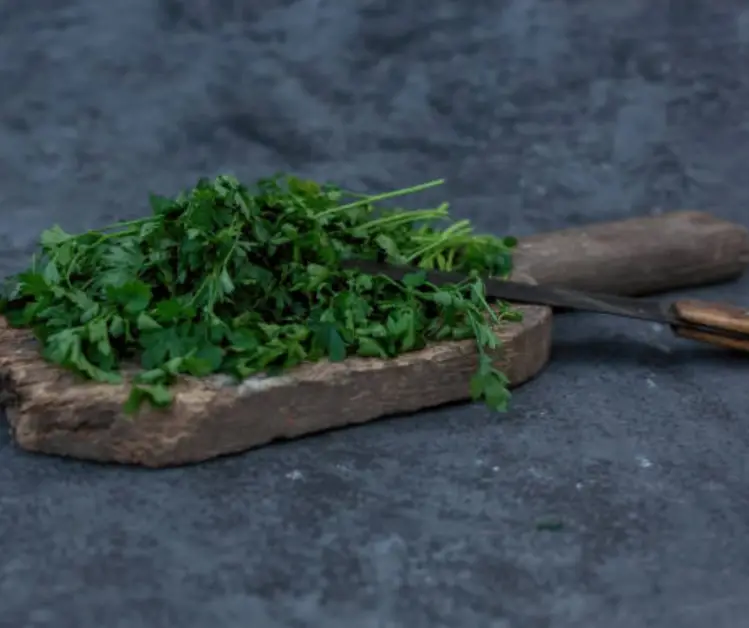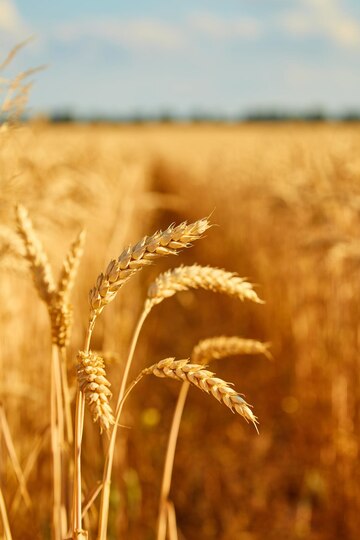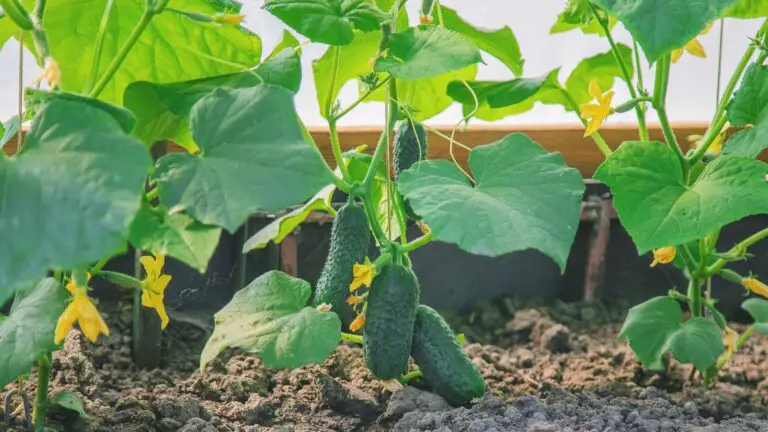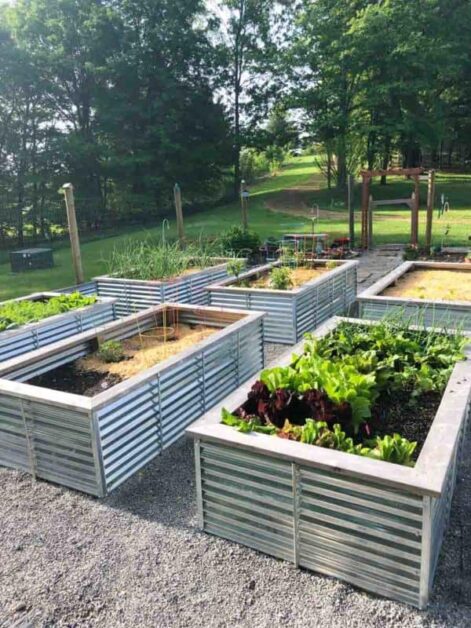Harvesting Parsley: Preserving Its Freshness
Table of Contents
Choosing the Best Parsley Plants for Harvesting
When it comes to choosing the best parsley plants for harvesting, there are a few factors to consider. First and foremost, you’ll want to select a parsley variety that suits your specific needs and preferences. For culinary purposes, the most common types of parsley are flat-leaf parsley (Petroselinum neapolitanum) and curly parsley (Petroselinum crispum). Flat-leaf parsley has a more robust and earthy flavor, while curly parsley is milder and often used as a garnish.
Additionally, you’ll want to ensure that the parsley plants you choose are healthy and vigorous. Look for plants with vibrant green foliage and no signs of disease or pest damage. It’s also important to select plants that have been grown in good conditions, whether you’re buying from a nursery or starting your own parsley seeds. Adequate sunlight, well-draining soil, and regular watering are essential for parsley plants to thrive.
Furthermore, if you’re planning to harvest parsley on a regular basis, you may want to consider planting multiple parsley plants to ensure a continuous supply. Parsley is a biennial herb that typically produces leaves in its first year and flowers and seeds in its second year. By planting new parsley plants each year, you can harvest fresh leaves throughout the growing season and easily replace plants that have gone to seed.
By carefully selecting healthy plants and understanding the different parsley varieties available, you can ensure a bountiful harvest of fresh parsley for all your culinary endeavors.
Understanding the Different Types of Parsley for Optimal Freshness
Parsley, a versatile and aromatic herb, comes in various types, each with its own unique qualities and flavors. Understanding the different types of parsley is crucial for achieving optimal freshness in your culinary creations.
The two most commonly encountered parsley varieties are curly parsley (Petroselinum crispum var. crispum) and flat-leaf or Italian parsley (Petroselinum crispum var. neapolitanum). Curly parsley features compact, ruffled leaves that add a dash of visual appeal to any dish. Its flavor tends to be milder and less robust compared to flat-leaf parsley. On the other hand, flat-leaf parsley boasts dark green, glossy leaves that pack a stronger, earthier taste. It is highly valued in Mediterranean and Middle Eastern cuisine for its concentrated flavor profile.
When it comes to selecting the best parsley for your harvest, it ultimately depends on personal preference and the intended culinary application. Some recipes might call for the delicate, decorative touch of curly parsley, while others demand the bolder flavors of flat-leaf parsley to shine through. By understanding the distinctions among parsley varieties, you can choose the one that best complements your dishes and ensures optimal freshness.

Signs to Look for When Parsley is Ready to be Harvested
One of the key factors in successfully harvesting parsley is knowing when it is ready to be picked. By being able to identify the signs of readiness, gardeners can ensure that they are harvesting their parsley at its peak freshness and flavor. There are a few indicators that can help determine if parsley is ready to be harvested.
Firstly, the size of the parsley leaves can be a good indicator of readiness. Mature parsley leaves are typically larger and have fully developed leaflets. Keep an eye out for leaves that have reached their full size and have a vibrant green color.
Another sign to look for is the overall health and appearance of the parsley plant. Healthy plants will have sturdy stems, lush foliage, and no signs of disease or pests. It’s important to remember that harvesting parsley is an ongoing process, so it’s best to start harvesting when the plant is still in good health.
In addition to visual cues, the aroma of the parsley can also provide a clue as to its readiness. Give the parsley leaves a gentle rub between your fingers and take note of the scent. If the parsley has a strong and fragrant aroma, it is likely ready to be harvested.
By paying attention to these signs of readiness, gardeners can ensure that they are harvesting their parsley at the optimal time for maximum freshness and flavor. It’s important to remember that parsley can be harvested on an ongoing basis, allowing for a consistent supply of this versatile herb. So, don’t be afraid to pick a few leaves and enjoy the flavors of freshly harvested parsley in your favorite recipes.
Tools and Equipment Needed for Harvesting Parsley
To efficiently harvest parsley, it is crucial to have the right tools and equipment on hand. These items not only make the process easier but also help maintain the freshness and quality of the herb. Here are the essential tools and equipment needed for harvesting parsley:
1. Pruning Shears: A sharp pair of pruning shears or scissors is indispensable for cutting parsley stems without causing damage to the plant. Look for shears with stainless steel blades for durability and ease of cleaning.
2. Garden Gloves: Protecting your hands while harvesting parsley is vital, especially if you have sensitive skin or allergies. Opt for gardening gloves that are comfortable, breathable, and offer good dexterity for precise leaf and stem handling.
3. Harvesting Basket or container: A sturdy basket or container is necessary to collect the freshly cut parsley. Make sure it is wide enough to accommodate a sufficient amount of herb without crushing or bruising the leaves.
4. Watering Can or Hose: Before harvesting, it’s advisable to lightly water the parsley plants to ensure they are adequately hydrated. A watering can or hose with a fine mist setting is ideal for this task.
By equipping yourself with these tools and equipment, you’ll be well-prepared to harvest parsley effectively while safeguarding its freshness and flavor. Stay tuned for the upcoming section which will guide you through the step-by-step process of harvesting parsley.
Certainly! Let’s explore the tools and equipment needed for harvesting parsley. Whether you’re a seasoned gardener or a beginner, having the right tools ensures a successful and efficient harvest. Here’s what you’ll need:
| Tool or Equipment | Purpose |
|---|---|
| Garden Shears or Pruning Scissors | Used for cutting parsley stems. Make sure they are sharp and clean to avoid damaging the plants. |
| Gardening Gloves | Protect your hands from thorns, prickles, or any potential skin irritation during the harvest. |
| Basket or Container | A receptacle to collect the freshly harvested parsley leaves. Choose a clean container to prevent contamination. |
Step-by-Step Guide to Harvesting Parsley
Harvesting parsley is a straightforward process that can be done at any stage of growth. To ensure optimal freshness and flavor, it’s important to follow a step-by-step guide. Here’s how to harvest parsley efficiently:
1. Choose the right time: Parsley can be harvested once the plants have reached a height of about 6-8 inches. This typically occurs 70-90 days after planting. The leaves should be vibrant green and healthy-looking.
2. Prepare your tools: Before you begin harvesting, gather a pair of sharp scissors or pruning shears. Dull blades can damage the plant and hinder the regrowth process.
3. Cut the outer stems: Start by trimming the outermost stems of the parsley plant, leaving the inner stems intact. Be sure to cut the stems above the first set of leaves to encourage new growth.
4. Leave the center intact: It’s important to leave the central stems of the parsley plant untouched during the initial harvest. This allows the plant to continue growing and produce more leaves in the future.
5. Rinse and store: Once you’ve harvested the desired amount of parsley, gently rinse the leaves under cold running water to remove any dirt or debris. Pat them dry with a clean towel and store them in a sealed container or plastic bag in the refrigerator. This will help maintain freshness for up to a week.
By following these simple steps, you can ensure a successful parsley harvest and enjoy the fresh flavor of this versatile herb in your culinary creations.
Proper Techniques for Cutting Parsley Stems
When it comes to cutting parsley stems, it is important to use proper techniques to ensure healthy and productive plant growth. One of the key considerations is the timing of the cutting. Experts recommend waiting until the parsley plant has reached a minimum height of 6 inches before harvesting the stems. This allows the plant to establish a strong root system and ensures a higher yield. It is also important to choose a sharp, clean pair of pruning shears to make clean cuts without causing unnecessary damage to the plant.
When harvesting parsley stems, it is best to cut the outer stems first, leaving the inner stems to continue growing. This encourages the plant to produce new growth, leading to a continuous supply of fresh parsley. To cut the stems, position the pruning shears at a 45-degree angle just above a set of leaves or branching point. Make a swift, clean cut to avoid crushing or tearing the stem. It is important to avoid cutting more than one-third of the stems at a time to prevent stressing the plant. By following these proper cutting techniques, gardeners can enjoy an abundant supply of fresh parsley for culinary purposes.

Handling and Storing Freshly Harvested Parsley
After harvesting freshly-grown parsley, proper handling and storage techniques are essential for maintaining its freshness and flavor. Handling parsley with care is crucial to prevent any damage to the delicate leaves and stems. Gently remove the parsley from the garden or container, taking care not to bruise or crush the leaves. Avoid yanking or tugging forcefully, as this can lead to wilted or damaged parsley.
Once harvested, it is important to store the parsley correctly to preserve its freshness. Begin by trimming the ends of the stems to encourage water absorption and prevent wilting. Place the parsley in a jar or vase with a few inches of water, similar to how you would arrange fresh cut flowers. Loosely cover the leaves with a plastic bag to retain moisture. Store the parsley in the refrigerator, preferably in the crisper drawer, where the temperature and humidity are optimal for prolonging its freshness. With proper handling and storage, you can ensure that your freshly harvested parsley stays vibrant and flavorful for future culinary creations.

Tips for Washing and Cleaning Parsley Leaves
Washing and cleaning parsley leaves properly is essential to remove any dirt, debris, or pesticides that may have accumulated on the surface. Here are some tips to help you ensure that your parsley is clean and ready to use:
1. Start by separating the parsley leaves from the stems. Hold the bunch of parsley by the stems and gently shake it to remove any loose dirt or insects.
2. Fill a clean sink or a large bowl with cold water. Submerge the parsley leaves in the water and swish them around gently with your hands. This will help dislodge any remaining dirt or debris.
3. After a few minutes, lift the parsley leaves out of the water and transfer them to a colander or a salad spinner. Rinse them under running water to further wash away any residue.
4. If you notice any damaged or discolored leaves, remove them from the bunch. It’s important to discard any leaves that are not fresh or healthy-looking.
5. Once the parsley leaves are clean, pat them dry gently using a clean kitchen towel or paper towels. Avoid rubbing or crushing the leaves, as this can diminish their flavor and texture.
Remember, washing parsley leaves just before use is recommended to preserve their freshness. By following these tips, you can ensure that your parsley is clean and ready to enhance the flavor of your dishes.
Drying Parsley: Methods and Best Practices
Drying parsley is a popular method of preserving this versatile herb for future use. Not only does drying parsley extend its shelf life, but it also intensifies its flavor, making it a valuable addition to any spice rack. There are a few different methods for drying parsley, each with its own advantages and considerations.
One common method is air drying, which involves hanging bunches of parsley upside down in a well-ventilated area. This allows the moisture to evaporate slowly, resulting in dried parsley that retains its vibrant green color. Another option is using a food dehydrator, which offers more control over the drying process. With a dehydrator, you can set the temperature and drying time to ensure that the parsley is dried thoroughly and evenly. Lastly, some people choose to dry their parsley in the oven. This method requires spreading the parsley on a baking sheet and placing it in the oven on low heat for several hours until it is completely dry. Whichever method you choose, it’s important to store dried parsley in an airtight container away from heat and light to maintain its quality.
Drying parsley can be a simple and effective way to preserve the herb’s freshness and flavor. It allows you to have a readily available supply of parsley, even when it’s out of season. However, it’s crucial to ensure that the parsley is clean and free of any dirt or pests before the drying process begins. Additionally, understanding the optimal drying time and temperature for parsley can help maintain its quality and prevent degradation. By following the best practices for drying parsley, you can enjoy the benefits of this versatile herb all year round.
Freezing Parsley: Preserving Its Freshness for Longer Periods
Freezing parsley is a great way to preserve its freshness for extended periods, ensuring that you have a supply of this flavorful herb even when it’s out of season. By freezing parsley, you can retain its vibrant green color, crisp texture, and aromatic taste, making it an excellent addition to your culinary creations throughout the year.
To freeze parsley, start by washing the leaves thoroughly and patting them dry with a clean kitchen towel or paper towel. Once dry, remove the stems and finely chop the leaves. For convenience, you can also choose to freeze the parsley leaves whole. Place the chopped or whole leaves in a freezer-safe container or airtight freezer bag, ensuring that you remove as much air as possible. Label the container with the date of freezing to keep track of its freshness. Finally, place the container in the freezer, where it can be stored for up to six months.
Certainly! Let’s explore some methods for preserving the freshness of parsley so you can enjoy its flavor for longer periods:
| Method | Steps |
|---|---|
| Refrigerating Parsley | 1. Harvest fresh parsley from your garden or purchase it from a store. Choose bright green bunches that look fresh. |
- Rinse the parsley under cold water to remove dirt and bugs.
- Chop the parsley into small pieces (discard stems if desired).
- Place the parsley on a plate or tray in the refrigerator (top shelf) away from dripping foods.
- Gently toss the parsley daily until it dries (usually within 2-3 days).
- Transfer the dried parsley to an airtight container and store it in a cool, dry place . | Blanching and Freezing Parsley | 1. Follow the same steps for harvesting and rinsing fresh parsley.
- Blanch the parsley by briefly immersing it in boiling water, then immediately transferring it to ice water.
- Drain and pat dry.
- Chop or leave whole, and freeze in airtight containers or ice cube trays . | Storing in Water | 1. Fill a glass or jar with about an inch of water.
- Submerge the trimmed parsley stems in the water.
- Loosely cover the top with a plastic bag and secure it.
- Store in the refrigerator . | Compound Butter | 1. Finely chop parsley.
- Mix it with softened butter.
- Shape into a log or use immediately.
- Freeze for longer storage . | Herb Cubes or Chimichurri | Explore creative ways to incorporate parsley into herb cubes or flavorful chimichurri sauce .
Making Parsley Oil: A Flavorful and Versatile Preservation Method
When it comes to preserving the freshness and flavor of parsley, making parsley oil is an excellent option. Not only does it enhance the taste of your dishes, but it also extends the shelf life of this fragrant herb. Parsley oil is versatile and can be used in various culinary applications, making it a favorite among home cooks and professional chefs alike.
To make parsley oil, you will need a handful of fresh parsley leaves, a good quality oil such as olive or avocado oil, and a blender or food processor. Start by washing the parsley leaves thoroughly to remove any dirt or debris. Pat them dry using a clean kitchen towel or paper towels to ensure that no moisture remains. Next, place the parsley leaves in the blender or food processor and add the oil. The ratio of parsley to oil can vary depending on your preference, but a common guideline is to use one cup of oil for every one cup of packed parsley leaves.
Creating Parsley Herb Butter: A Delicious Way to Preserve Its Freshness
When it comes to preserving the freshness of parsley, one versatile and delicious option is creating parsley herb butter. This simple yet flavorful concoction not only allows you to enjoy the vibrant taste of parsley year-round but also adds a burst of freshness to your culinary creations.
To make parsley herb butter, start by gathering fresh parsley leaves and washing them thoroughly to remove any dirt or debris. Next, finely chop the parsley leaves and set them aside. In a mixing bowl, combine softened unsalted butter with the chopped parsley, ensuring that the butter is evenly infused with the herb’s flavor. Some recipes may also call for additional ingredients like minced garlic, lemon zest, or sea salt to enhance the taste. Once all the ingredients are combined, transfer the mixture onto a sheet of parchment paper or plastic wrap and roll it into a log shape. Finally, refrigerate or freeze the parsley herb butter until it is solidified and ready to be used.
By making parsley herb butter, you not only preserve the fresh flavors of parsley but also have a versatile ingredient on hand that can be used to elevate a wide range of dishes. Whether it’s spreading it on warm toast, melting it over grilled steak, or using it to season roasted vegetables, parsley herb butter adds a delightful and aromatic twist to any meal. So the next time you find yourself with an abundance of fresh parsley, consider creating this delicious herb butter to extend the lifespan of your harvest while adding a burst of freshness to your culinary endeavors.
Using Parsley in Recipes: Maximizing Freshness and Flavor
When it comes to using parsley in recipes, freshness and flavor are essential for maximizing its potential. Whether you are adding parsley as a garnish, flavor enhancer, or main ingredient, there are a few key considerations to keep in mind.
First and foremost, selecting fresh parsley is crucial. Look for vibrant green leaves that are crisp and aromatic. Avoid any wilted or yellowing leaves as they may indicate older or less fresh parsley. Additionally, opt for flat leaf parsley whenever possible, as it tends to have a stronger and more robust flavor compared to its curly leaf counterpart.
Once you have your fresh parsley, it’s important to handle it properly to maintain its flavor. Avoid washing parsley until you are ready to use it, as excess moisture can cause the leaves to wilt and lose their vibrancy. When adding parsley to your recipes, consider adding it towards the end of the cooking process to preserve its flavors. This will help prevent it from becoming overcooked and losing its distinct taste.
Common Mistakes to Avoid When Harvesting and Preserving Parsley
When it comes to harvesting and preserving parsley, there are a few common mistakes that many gardening enthusiasts make. These mistakes can affect the quality and flavor of the herb, so it’s important to avoid them if you want to enjoy the best possible results from your harvest.
One common mistake is harvesting parsley too late. While it may be tempting to wait until the herb has fully matured, this can actually lead to a decline in flavor and quality. Parsley should be harvested when the leaves are vibrant green and the plant is still young. Waiting too long can result in tough and bitter leaves.
Another mistake to avoid is not properly storing freshly harvested parsley. After harvesting, it’s important to handle the herb with care to prevent bruising and wilting. Store the parsley in a cool and dry place to maintain its freshness and flavor. Many people make the mistake of leaving freshly harvested parsley out at room temperature, which can cause it to wilt quickly. By storing it properly, you can extend the shelf life of your harvested parsley and enjoy its fresh taste for longer.
Frequently Asked Questions About Harvesting and Preserving Parsley
Q: How often should I harvest my parsley plants?
A: The frequency of harvesting your parsley plants will depend on your needs and the growth rate of your plants. Generally, you can start harvesting parsley leaves when the plants have reached a height of 6 to 8 inches (15 to 20 cm) or have developed three or more leaf segments. For a continuous supply of fresh parsley, it is recommended to harvest the outer leaves as you need them, leaving the inner leaves to continue growing. This allows the plant to continue producing new leaves throughout the growing season. Remember not to remove more than one-third of the plant at a time to ensure its vitality and regrowth.
Q: Can parsley be dried for later use?
A: Yes, parsley can be dried for later use, although the drying process may cause a loss of flavor compared to fresh parsley. To dry parsley, start by washing the leaves and patting them dry with a clean towel. Remove the stems and discard any discolored or damaged leaves. Next, spread the leaves out in a single layer on a drying rack or a paper towel-lined tray, ensuring good air circulation. Leave them in a warm, well-ventilated area away from direct sunlight until they are completely dry and crumbly, which usually takes about 1 to 2 weeks. Once dried, store the parsley in an airtight container in a cool, dark place to maintain its flavor and potency.
Expert Tips and Advice for Maintaining Parsley’s Freshness throughout the Year
Maintaining the freshness of parsley throughout the year can be a challenge, but with the right tips and advice, you can ensure that your herb stays vibrant and flavorful. Here are some expert recommendations to help you prolong the life of your parsley plants:
1. Regularly trim and harvest: Regularly harvesting your parsley not only provides you with fresh herbs but also encourages new growth. Trim the outer stems when they reach a length of 6-8 inches, making sure to leave the inner stems untouched to allow for continued growth. By doing this, you can enjoy a continuous supply of fresh parsley.
2. Optimal watering and light conditions: Parsley thrives in well-draining soil and prefers consistent moisture. Water your plants regularly, ensuring that they receive 1-2 inches of water per week. Additionally, parsley requires at least 4-6 hours of direct sunlight each day. If you live in an area with limited sunlight, consider using grow lights to supplement the natural light and provide the necessary conditions for parsley to flourish.
By following these expert tips, you can maintain the freshness of your parsley plants throughout the year, ensuring a steady supply of this aromatic herb for all your culinary creations. Stay tuned for more valuable advice on preserving parsley’s freshness and maximizing its flavor.
How long can parsley be stored after it is harvested?
Freshly harvested parsley can be stored for up to two weeks if properly handled and stored.
Can I harvest parsley year-round?
Parsley is a biennial plant that can be harvested year-round, but it is most productive in its first year.
Can parsley be grown indoors?
Yes, parsley can be grown indoors in pots or containers, providing a fresh supply throughout the year.
Is it necessary to wash parsley before using it?
It is recommended to wash parsley before using it to remove any dirt or debris that may be present.
Can I freeze parsley without blanching it first?
Yes, parsley can be frozen without blanching, but blanching helps to preserve its color and flavor better.
How long can frozen parsley be stored?
Frozen parsley can be stored for up to six months without significant loss of flavor or quality.
Can parsley oil be used for cooking?
Yes, parsley oil can be used for cooking to add flavor to various dishes.
How long does parsley herb butter last?
Parsley herb butter can last for up to two weeks when stored in the refrigerator.
Can I substitute dried parsley for fresh parsley in recipes?
While dried parsley can be used as a substitute, it may not provide the same fresh flavor as fresh parsley.
Can I use parsley stems in recipes?
Parsley stems are often used in stocks or soups to enhance flavor, but they can be tough and fibrous, so it is recommended to remove the leaves and use them separately.








